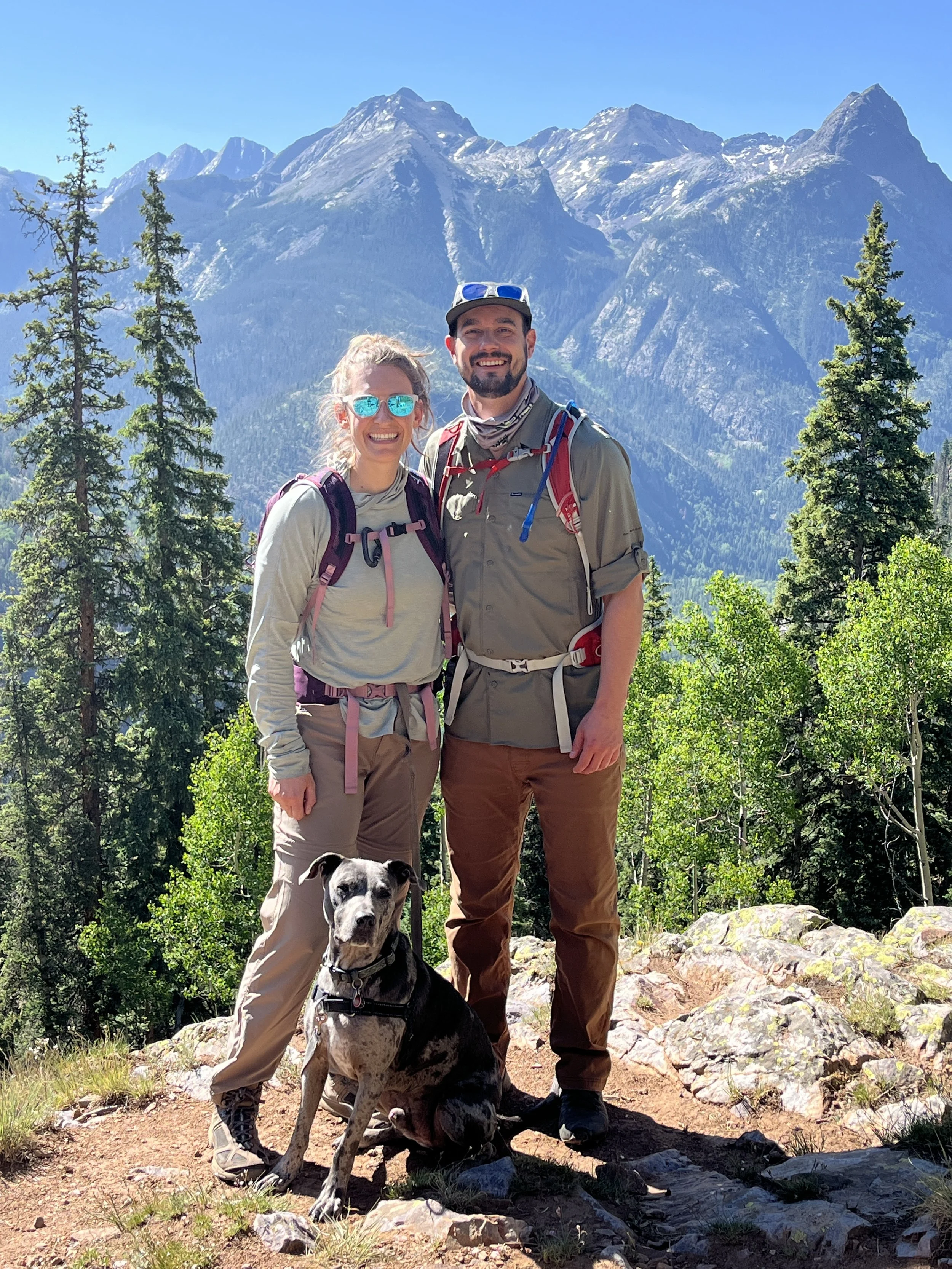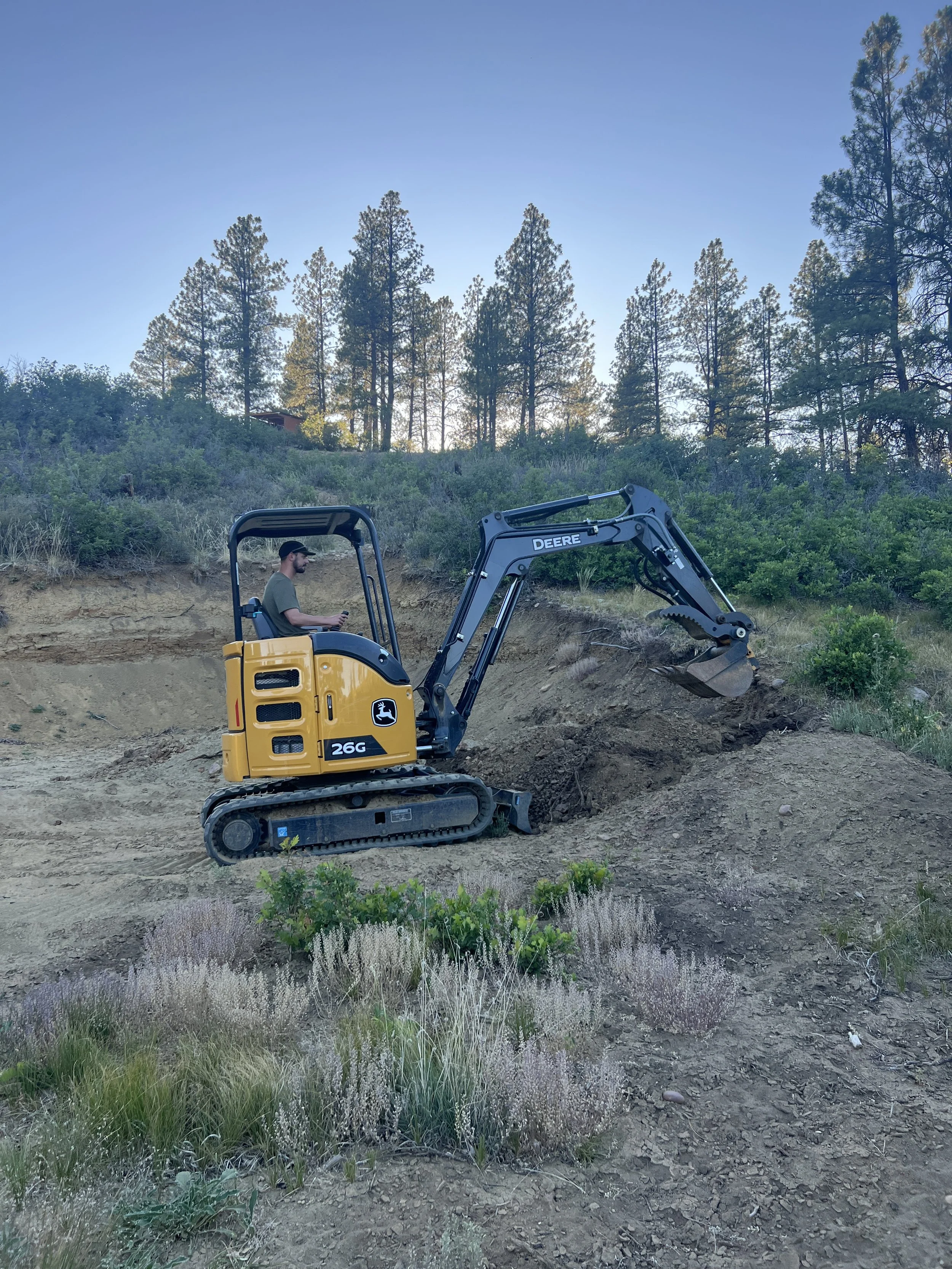Excavators, ATVs and the 4th of July
This past 4th of July weekend, the Tundra team all kind of had similar ideas. Amanda and her husband Nick traveling to Ouray to see friends and ourselves heading to Durango to camp and visit with family. Blessed with beautiful weather and lots of opportunity to explore the outdoors.
While visiting with Jess’s cousins in Bayfield, I not only embarrassed myself trying to work a clutch on an ATV just trying to get it into first gear, but was presented with an opportunity no male in their right mind would turn down…… the chance to operate an excavator. Surprisingly enough, from my perspective, working an excavator is a hell of a lot more intuitive than an ATV. You got 2 joysticks, one that operates the distal portion of the arm and the cab, the other the proximal portion of the arm and the bucket. You can’t not smile while working heavy machinery.
As we were all rotating through taking turns moving the piles of dirt in their adult sandbox, everyone had varying degrees of success in how much dirt they were actually able to scoop up and move. After everyone completed their turn, our host popped in the seat and showed us how it was really done. It was clear the skill set discrepancy in not only the speed of completion but the volume of material actually being dispersed.
It got me thinking about how this was a lot like our patient’s initial stages in learning how to properly lift. When we first start out, we all work through similar mental and physical stages of development. We find some early success, we’re able to pick up some weights we didn’t think we could move, lift them relatively effectively and build upon that experience.
As each of us dives further and deeper into lifting, questions start being asked about how to improve technique in prospect of moving them more effectively in the pursuit of lifting heavier and increasing strength. As we gain skill and understanding of the movements, from my perspective as their physical therapist, this is where you really get to see patients start to put it together. You begin to see higher intent, better sequencing, and greater efficiency. This is where moving weights really begin to compound.
If you thought the early stages of lifting were fun, let me tell you, it's only the beginning.
Watching someone transition from just learning how to just pick up weights and put them down, to going into their set up, cueing the right tension and bar path, breathing effectively, and moving some heavy ass weight is fucking hell of an experience. No better feeling as a physical therapist than watching your previously injured patient move some heavy fucking weight without problems.
Weightlifting is the greatest sport out there, not debatable, and becomes so much fun the more you learn and the more effective you become at it.This is your call to action to keep going, continue to ask questions, and keep learning.
Hoping everyone had a great 4th of July!
Helping athletes RESOLVE THEIR PAIN by CLEARLY DEFINING THE PROBLEM and IMPLEMENTING EFFECTIVE SOLUTIONS to get them back doing the activities they love!
If you are currently struggling with an injury or unable to perform in the activities you enjoy. Please follow the link to schedule a consultation call to discuss how we can help you.


